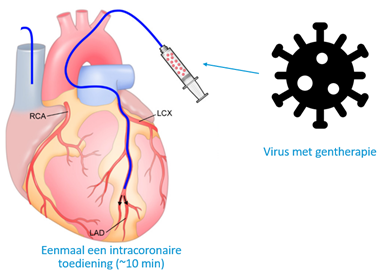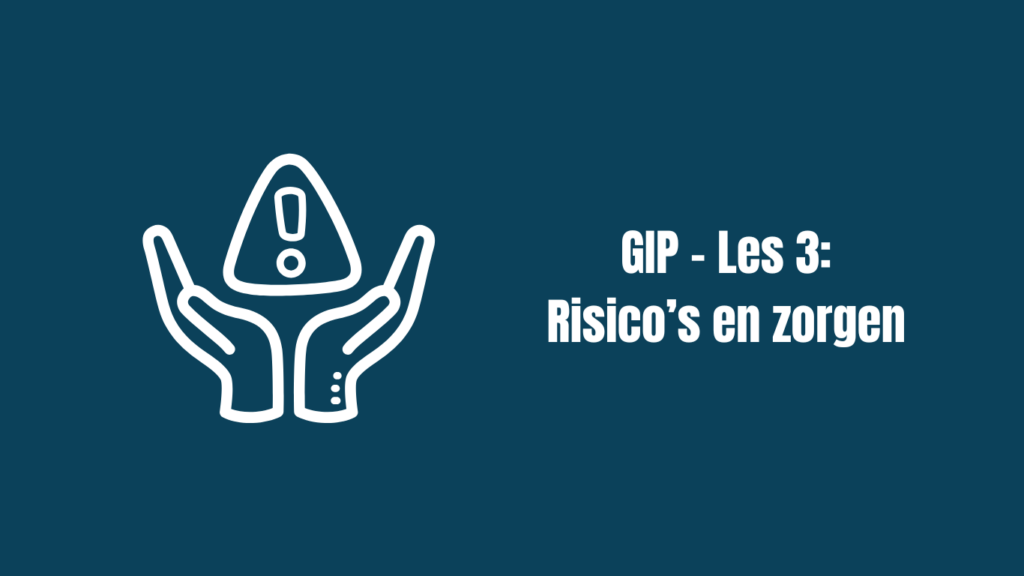With GIP (gene therapy information packet), we take you into the world of gene therapy. In recent years there has been a lot of research into gene therapy. This has provided insight into whether and how gene therapy can help with a treatment for PLN-R14del. We will take you into the world of gene therapy. In this third lesson, we talk about the risks and concerns of gene therapy.
Overview gene therapy information packet:
- The gene therapy information packet!
- BIP – Lesson 1: Cells and DNA.
- BIP – Lesson 2: Possible gene therapies.
- BIP – Lesson 3: Risks and concerns.
- GIP – Lesson 4: Existing gene therapies.
As we have seen earlier, gene therapies offer many opportunities to cure PLN. At the same time, gene therapies also have disadvantages. In this lesson, we consider these disadvantages of gene therapy. It is difficult to capture these disadvantages under one heading. Therefore, the disadvantages are split up here. We will first consider the disadvantages of the different therapies and then consider disadvantages of the forms of administration.
Disadvantages by therapy
Each form of therapy we mentioned in the previous lesson has its own pros and cons. Therefore, research is needed to clarify which therapy is the best choice for PLN.
In prime editing, the mutation is neatly repaired, but the requisites for prime editing do not fit into one virus. The chance of two viruses entering the same cell is less than the chance of one virus entering the cell. As a result, DNA is repaired in fewer cells or a higher dosage is required that also involves more side effects. In addition, there are no therapies with prime editing on the market yet, so the process of getting it to market could take longer. With both prime editing and CRIPSR/Cas9, other spots in the DNA can be accidentally modified. With CRISPR/Cas9 the chance of this happening is greater than with prime editing. However, this is screened very carefully and the chances of such a change having an effect are small.
CRIPSR-Cas9 and trapping PLN at the RNA level reduces the amount of PLN in a heart cell. The question is whether people can live healthy lives with less PLN. The answer to this question is not known. Mice can live with less PLN (see Lesson 4), but in mice PLN is probably less important. Therefore, research will have to show whether humans can also live with less PLN.
The disadvantage of general gene therapies such as I-1C is that they do not address the disease as closely as the cause. The advantage is that such a therapy is suitable for more patients and can also be cheaper because it can be given to a larger group of patients.
Disadvantages of AAVs
The form of administration of therapy can also have disadvantages. Here we focus on the two main disadvantages of AAVs. First, an AAV is a virus just like a cold virus. This means that your immune system can make antibodies against it (even though an AAV therefore does not cause disease). If you already have these antibodies at the beginning of therapy, the therapy will not work. Fortunately, there are solutions to this such as suppression of the immune system and technical improvement of AAVs. If you do not already have antibodies at the beginning of therapy, you can develop antibodies that allow only one-time administration. By the way, the latter is not necessarily a problem because gene editing basically requires only one treatment. A second disadvantage is that too high a dose of AAVs is bad for your liver. A balance is therefore sought between as many AAVs as possible so that you can treat as many heart cells as possible and as few AAVs as possible so that your liver does not suffer.
Administration
There are actually two options for the administration of gene therapy. The therapy can be administered by injection the heart. The procedure for this is similar to cardiac catheterization. Although this is more invasive than taking a pill, it is a one-time procedure. This therapy would probably be for gene editing and is also used for I-1c. The administration of a therapy that brings down PLN RNA levels is different. This treatment can simply be injected into a vein. However, this often requires repeated doses (e.g., every month).

Figure 1 Administration of virus with gene therapy via injection into the heart.
Concerns
There may also be other questions about gene therapy. Does it affect your genome or your person? And what are the consequences for offspring? To start with the former, only gene editing changes something in your genome. A treatment that intervenes on the RNA does not change the DNA. Gene editing is subject to strict controls that only the PLN gene is corrected without unwanted changes. Gene therapy targeting PLN will not affect who you are going forward.
Gene therapies are not passed on to offspring. This is because gene therapy comes in a specific jacket that can only be taken up by heart cells. In addition, there is a kind of lock on the gene whose key is present only in heart cells. As a result, the gene will not be expressed in cells other than the heart, if at all.
The long-term effects of gene therapy are not known and will only become known over the course of years (long-term here means more than 5 years). Research into a treatment will mainly look at the short-term effect and over the course of several years. Longer follow-up of patients will occur, but falls outside the research necessary to bring gene therapy to market.
Another concern is price. A gene therapy for a rare disease can be incredibly expensive. For existing gene therapies, costs run from several tons to 1 million per treatment. PLN Foundation is therefore committed not only to a treatment but also to affordable treatment.
Research has yet to show at what stage of the disease you can best be treated. Basically, the earlier the treatment, the less the disease will have affected the heart. Probably the first human studies will be done on patients at and advanced stage because that is more ethically justifiable.
It is clear that gene therapy is promising for PLN, but also has drawbacks. In the coming years, we will see which therapy works best and may go to clinical trials to treat patients. In the next lesson, we will look at what gene therapies are currently being developed for PLN.
